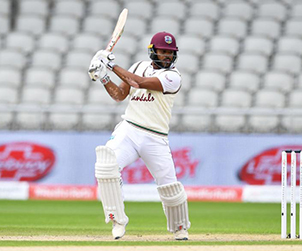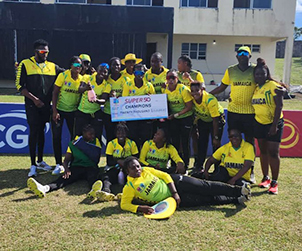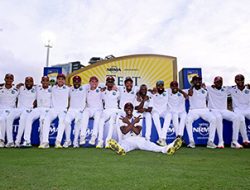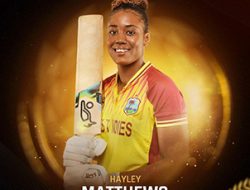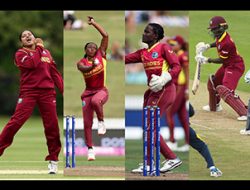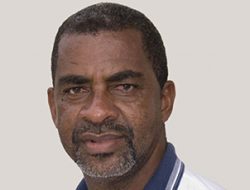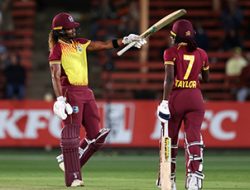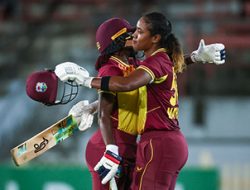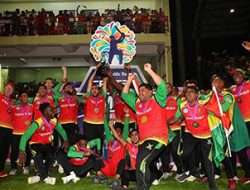New Zealand Cricket has agreed to play a day-night Test against Australia as part of a deal that will resume regular cricket between the two neighbours after a gap of four years and provide a significant financial leg-up for New Zealand.
The inaugural, experimental day-night Test will be played at Adelaide Oval with a pink Kookaburra ball in the third match of the series between Australia and New Zealand, between November 27 and December 1.
The match will go ahead much to the delight of the CA chief executive James Sutherland, who has championed the concept for more than seven years. It will also be a source of rich dividends for the host broadcaster Channel Nine, whose chief executive David Gyngell expects television ratings and by extension advertising revenues far in excess of those offered for standard Test match days.
However the views of the players can best be summed up as a combination of nervousness, apprehension and scepticism. While most agree the concept is great in theory, there is far less certainty about details such as the pink ball and its behaviour, the adjustment from day to night, and the effects the concept will have upon a format all players rate highly as the fairest and truest test of prowess with bat or ball.
New Zealand’s players have been loudest of all in their worries about the concept, and their players association chief Heath Mills said an agreement had ultimately been reached because Brendon McCullum’s team could see the “bigger picture” benefits of regular cricket against Australia. The two nations have not played a Test series since November 2011, and only contested the Chappell-Hadlee Trophy for ODIs at ICC events.
“It’s fair to say our players are nervous about the day-night Test. It’s uncharted territory and because of that there will be uncertainty and apprehension,” Mills said. “However, whilst the players have reservations about the concept, they can see the bigger picture in the new agreement, and the greater good it brings to all levels of the game.”
Australia’s coach Darren Lehmann has been a vocal supporter of the concept. Alongside former captain and now CA board member Mark Taylor, Lehmann has been an advocate for day-night Tests at the ICC cricket committee discussion table.
“I’m looking forward to it to see what it brings, looking forward to seeing how both teams perform under lights, looking forward to seeing a massive crowd,” Lehmann said of a match to be played at his former home ground in Adelaide. “I think it’s going to be exceptional to see everyone turning up for the first one ever in Test match cricket, I’m excited, and I know the players are excited and looking forward to the challenge.
“Recommendations to the ICC committee were to make sure we are pushing the boundaries if you like and trying to get day-night Test matches, evening Test matches, to try and get people coming to watch it in different parts of the world in different countries, and versus different countries. We think it’s a really important way to go and only time will tell if it’s right or it’s wrong, end of the day we’ve got to give it a crack and I think it’s important for the game.
“It’s very special for everyone involved, players, staff, everyone at CA, and New Zealand Cricket so it’s going to be a really interesting time. Looking forward to what the challenges the ball brings for example and how it reacts on the pitch. I’m sure it’s going to be okay.”
For Sutherland, the push for day-night Tests has been one of the few consistent running themes of his long tenure as CA chief executive. Other ideals such as the Test Championship have fallen by the wayside, and the advent of Twenty20 has brought major new sources of revenue to the game, but he was always determined to open up Test cricket to larger attendances and stronger television ratings.
“One of the global challenges with Test cricket is that most of the matches outside holiday periods are played on week days, in the middle of the day when people are at work and kids are at school,” Sutherland said. “By shifting the playing times each day’s play can go into the evening and allow people to come in after work or after school to attend the last few hours of play, but also when they get home in other parts of the world or other parts of the country, they can watch the game on TV.
“The Perth Test match is a great illustration of that. It’s fanatically watched on the eastern seaboard of Australia every year because of the time difference. Our television ratings are something like 40 per cent more for the whole country.
“We’re really confident with the work that’s been done over the past few years. We’ve had two successive seasons of Sheffield Shield cricket where pink balls have been trialled. We’ve worked very closely with the Australian Cricketers’ Association and Kookaburra in the development of the ball and its continued upgrade to make it ready.
“We’ll make sure that the players from both teams are well prepared. We’re working really closely with New Zealand Cricket in giving them the right tour matches and preparation before the ultimate day-night Test, which is the last of the series. And similarly with our players.”
It is believed that New Zealand’s players will play two tour matches under lights before the Adelaide Test, while Australian players will have one day-night Sheffield Shield round following their return home from a short tour of Bangladesh, and perhaps another between the second and third Tests.
As for Gyngell, the Nine Network’s chief cannot wait to see the ratings. “Evolution is everything in elite sport and its coverage, and it’s up to us all to think outside the square and meet these challenges,” he said. “My congratulations to James Sutherland and Cricket Australia and our friends at New Zealand Cricket for having the foresight and mettle to take it on, and for the support of team captains Michael Clarke and Brendon McCullum.
“Let’s give it a red-hot go and see what develops.”
A pink-hot go, perhaps.

